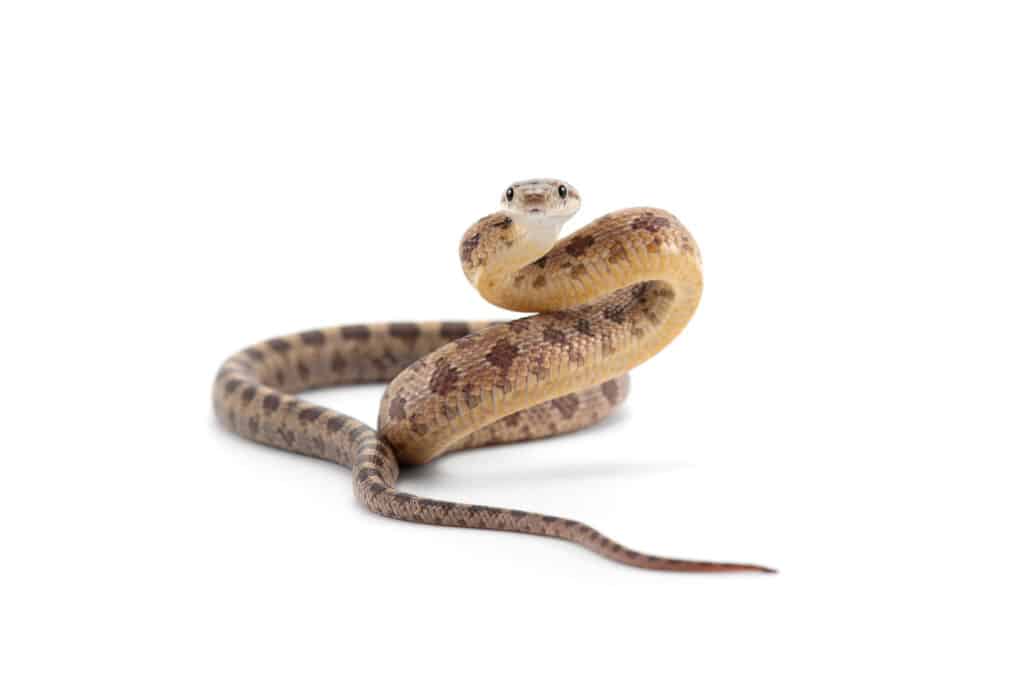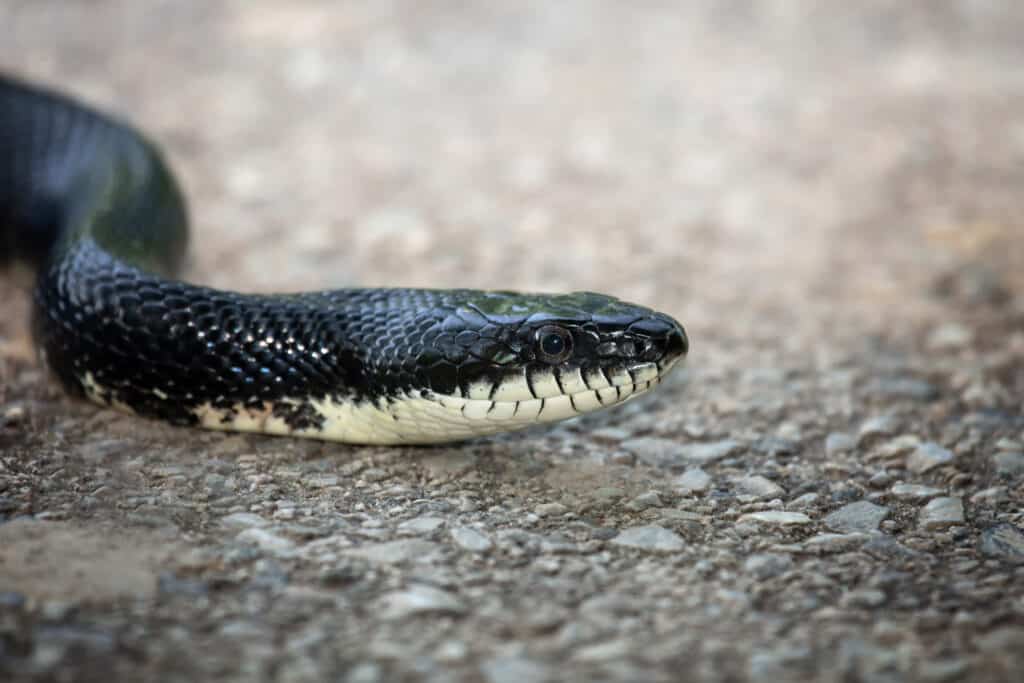
Rat snakes are marvelous creatures. They are beautiful to look at and easy to take care of. They are the perfect type of snake for a pet. In addition, they are a very common snake that you might find in your own backyard. As a native Texan, I come into contact with rat snakes all the time. This might make you wonder, are rat snakes venomous?
Rat snakes are not venomous or poisonous; they kill by constricting their prey. Rat snakes do not want to harm you, but rat snakes will bite humans if they feel threatened or trapped. Different types of rat snakes are more hostile than others.
Rat snakes are great pet snakes for those that haven’t owned a snake before. Therefore, knowing more about rat snakes can help you to pick your pet. Read on to learn more about rat snakes and how they defend themselves.
How Rat Snakes Defend Themselves
Rat snakes are not poisonous or venomous. That being said, if you are bitten by a rat snake it will likely not be a big deal. Of course, you will still want to avoid getting bitten at all costs. In addition, you will certainly want to clean the wound if bitten. They might not be venomous but that does not mean they have clean mouths.
Of course, a rat snake is not going to go out of its way to bite you. Yet, like all creatures, they do have to defend themselves. They are capable of defending themselves through several techniques. Most people who are bitten by snakes were doing something they should not be doing. Such as picking up a wild snake.
First, rat snakes are capable of biting. If they feel threatened and trapped they will try to bite their way out of a situation. Rat snakes do not have fangs like venomous snakes do, but they do have a lot of small teeth.
Rat snakes have a very strong bite, so it will hurt a lot if they bite you. A rat snake bite often leads to infection because rat snake bites can bring in bacteria. If you do get bitten by a rat snake, go to Urgent Care as soon as you can to get it treated for infection.
Rat snakes also defend themselves by releasing a foul-smelling musk. The musk is supposed to smell very similar to poison. Therefore, it is supposed to deter pretty that wishes to eat rat snakes.
The musk looks like a thick white goo that emits from the snake’s cloacal scent glands. For humans who do not know what poison smells like to other creatures, we can define the smell of the rat snake musk as the smell of burnt tires.
Overall, if you see a rat snake, do not bother it because it can harm you even though it is not venomous.
Types of Rat Snakes

There are over 45 types of rat snakes. This will give you a wide variety of scale colors and behavior patterns. Some of the more common types of rat snakes are black rat snakes, gray rat snakes, yellow rat snakes, red rat snakes, and texas rat snakes. It is important to know about each of these to help keep your eye out for them in the wild and to make a better-informed decision about which type of rat snake you want to get as a pet.
Black rat snakes are a more peaceful species of rat snakes. They are seen often in places like trash dumps, barns, or abandoned buildings. They are more used to humans because of their choice to live in more industrial areas.
Most people are nervous about black rat snakes because of their size. They can get up to seven feet in length.
Gray rat snakes are also relatively calm snakes. They usually when faced with a predictor will either try and blend in with their environment or run away. If they are cornered though they will make an S shape and shake the tip of their tale which will make a buzzing sound and strike their prey.
Why Some Rat Snakes Are Mistaken Venomous Snakes
Red Rat snakes are often mistaken for copperhead snakes. Since copperheads are venomous, this leads to a threat for them since they are often unnecessarily killed because of this assumption. Red rat snakes are typically gentle creatures and their main form of defense is running away from its predator.
Red rat snakes are often called corn snakes. This is because when farmers leave their corn in the barn, rats or other rodents will often try to get into the corn. The red rat snake, though, will hide near the corn and eat the rodents that try to eat the corn. Red rat snakes are great for getting rid of rodent infestations.
The Texas rat snake is one of the more hostile rat sakes. They will bite you if they feel trapped by you. However, the Texas rat snake will try to flee if possible. They also follow the technique of the rattlesnake by vibrating its tail in hopes to get you to leave it alone.
This coupled with a slight color resemblance to the rattlesnake can sometimes result in someone mistaking a rat snake for the venomous rattlesnake. In fact, not too long ago someone posted a picture of a rat snake in my neighborhood Facebook group certain that he had spotted a rattlesnake in the neighborhood.
Rat Snake Diet In The Wild
Rat snakes eat a variety of things including rodents, frogs, birds, voles, chipmunks, lizards, and mice. They eat their prey by constricting them and squeezing their prey to death before they will swallow their prey whole.
Typically, constricting snakes are non-venomous. Pythons and boas for example are also non-venomous snakes that kill their prey through constriction.
Instead of using venom rat snakes constrict their prey which causes such great pressure on their prey’s lungs that they cannot breathe. This is what kills the prey and allows them to stop putting up a fight, making it possible for the snake to swallow the prey whole afterward.
Rat Snakes will often continue hunting after just catching prey because other animals are less likely to notice them if they smell like the prey they just killed.
How to Avoid Venomous Snakes Or Any Snake For That Matter
Rat snakes are not venomous or poisonous but you still might want to avoid contact with them. To avoid rat snakes or more importantly certain venomous snakes, it is best to avoid places where snakes may live. This includes avoiding tall grass, swamps, dumps, and other areas where they can hide.
The most likely times of year to be bitten by a rat snake is from April to October. This is because rat snakes and humans get more active outdoors when the weather warms up.
If you see a dead rat snake, do not touch it. Some rat snakes lay very still as a defense mechanism and therefore are still alive and could bite you. Also, be aware of the fact that if the snake feels threatened or cornered in any way they are more likely to attack. Therefore, make sure you give the rat snake as much space as you can.
